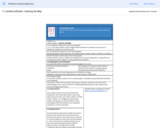
An engaging lesson using Dash robot to help students identify and describe different attributes of landforms.
- Subject:
- Applied Science
- Computer Science
- Social Studies
- Material Type:
- Activity/Lab
- Date Added:
- 03/17/2023

An engaging lesson using Dash robot to help students identify and describe different attributes of landforms.
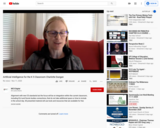
Alignment with new CS standards but the focus will be on integration within the current classroom, including ELA and Social studies connections, that do not take additional space or time to include in the school day. All presented material will use tools and resources that are available for free online.
Link to additional resources:
https://aiforteachers.org/

Students will review their knowledge about the life cycle of frogs and butterflies by using a bee-bot to make a path to the correct stages of the life cycles. This would be a review lesson for kindergarten students that have already learned about the life cycles of frogs and butterflies.
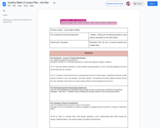
In this lesson, students will….
Be able to ask and answer questions referring explicitly to a text about the solar system. Students will start off with a KWL chart. Then the teacher is going to read a portion of a solar system passage. The teacher then will demonstrate to the students how to generate questions using the text. The teacher will model a level one as well as a level 3 question. Following that the class will read the remainder of the passage and generate some questions together. For independent work students are going to read a book on Epic and come up with a question as a group. They will write this down on a piece of poster paper. After all groups are done students will rotate in their groups around to the other groups posters (gallery walk style). Once at the groups students will use the bee bot to identify if the group's question was a level 1 or a level 3 question.

Students will be able to:PS Phy.6 Understand the relationship among work, energy and power.6.1 Use models to qualitatively and quantitatively analyze the kinetic and potential energy in a system.

Students will be able to:make and document scientific observations in order to compare the effects of different materials on an object's movement using Sphero Bolt coding robots.

Students will be able to:I can compare speeds of different objects over the same distance in order to explain how friction affects speed.

Students will be able to:Collect, report, and analyze data with regards to sports related injuries in high school athletes.

Students will be able to:Follow experiment directions to create a mixture that will eventually create "snow" while also recording steps and data on paper, as well as using Stop Motion Animation to document visually their progress through the activity.

Students will be able to: carry out an investigation by designing and building a roller coaster to understand how force, motion, gravity, friction, and changes in mass affect the motion of various size/weight balls.

Students will be able to:ASK questions that arise from careful observation of phenomena, or unexpected results, to clarify and/or seek additional information.ASK questions that arise from examining models or a theory, to clarify and/or seek additional information and relationships.ASK questions to determine relationships, including quantitative relationships, between independent and dependent variables.

Students will be able to:Analyze given characteristics for a particular element and identify the type of element and probable location on the Periodic Table. Explain why elements behave in different ways based on their location on the Periodic Table. Recognize patterns and general locations of elements on the Periodic Table based on the type of element and its characteristics.

In this lesson, students will compare two fractions with the same denominator by reasoning about their size, using area and length models, and using the >, < symbols.
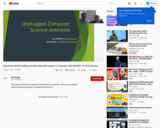
This session will focus on classroom tested hands on activities. The novice computer science/technology teacher can implement tomorrow.
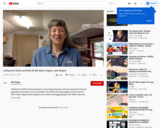
Children love LEGOs! And knowing how to code is becoming more and more essential for the next generation of innovators, do-ers and leaders. Put LEGOs and coding together and you have the FIRST LEGO League Explore program, an innovative and engaging project that makes classroom learning popular and fun. We will demonstrate how to build and code with the LEGO WeDo 2.0 kit. In addition, we will learn more about how this kit is used in the FLL Explore program while walking-through the curriculum and the engineering notebook used by students in grades K-4. We will also share best practices for safe use of shared materials.
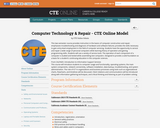
This two-semester course provides instruction in the basics of computer construction and repair; emphasizes troubleshooting and diagnosis of hardware and software failures; provides the skills necessary to gain entry-level employment in the field of computer servicing. Students have the opportunity to service and repair a wide range of personal computers while learning theory of operation and gaining programming skills. Students will use a variety of service tools. The operation of each component of a computer is studied and tested while assembling test computers. Designed to provide a solid foundation as a basis for a student's continuing education in the computer sciences.
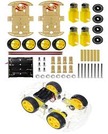
Design and build extensions onto the Driving Base and program it to complete two tasks. Students will learn and practice engineering and manufacturing techniques, cooperation and teamwork skills as they build and code an Autonomous Mobile Robot.

DASHlink is a virtual laboratory for scientists and engineers to disseminate results and collaborate on research problems in health management technologies for aeronautics systems. Managed by the Integrated Vehicle Health Management project within NASA's Aviation Safety program, the Web site is designed to be a resource for anyone interested in data mining, IVHM, aeronautics and NASA.
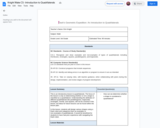
This is an introductory lesson to quadrilaterals. The focus of the lesson is only on determining whether or not a shape is classified as a quadrilateral. Understanding the attributes of different quadrilaterals like parallelograms, trapezoids, rectangles, rhombi, and squares, will not be covered in this lesson, but ideas for future lessons can be found within the lesson plan.
In this lesson, students will design various shapes using a Dash robot and categorize them as examples or non-examples of quadrilaterals. It would be beneficial for students to have had prior experience with navigating the Dash robot.
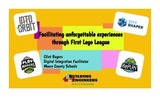
First Lego League gives students the opportunity to engage in hands-on STEM experiences. Yes, students will develop skills in programming but FLL connects STEM concepts to real-world examples.
Link to presentation slides:
https://docs.google.com/presentation/d/1-Ri8tVQcHvFvr-GZn_ylsVFPR3gBNmxKX3BxIRmdvyA/edit